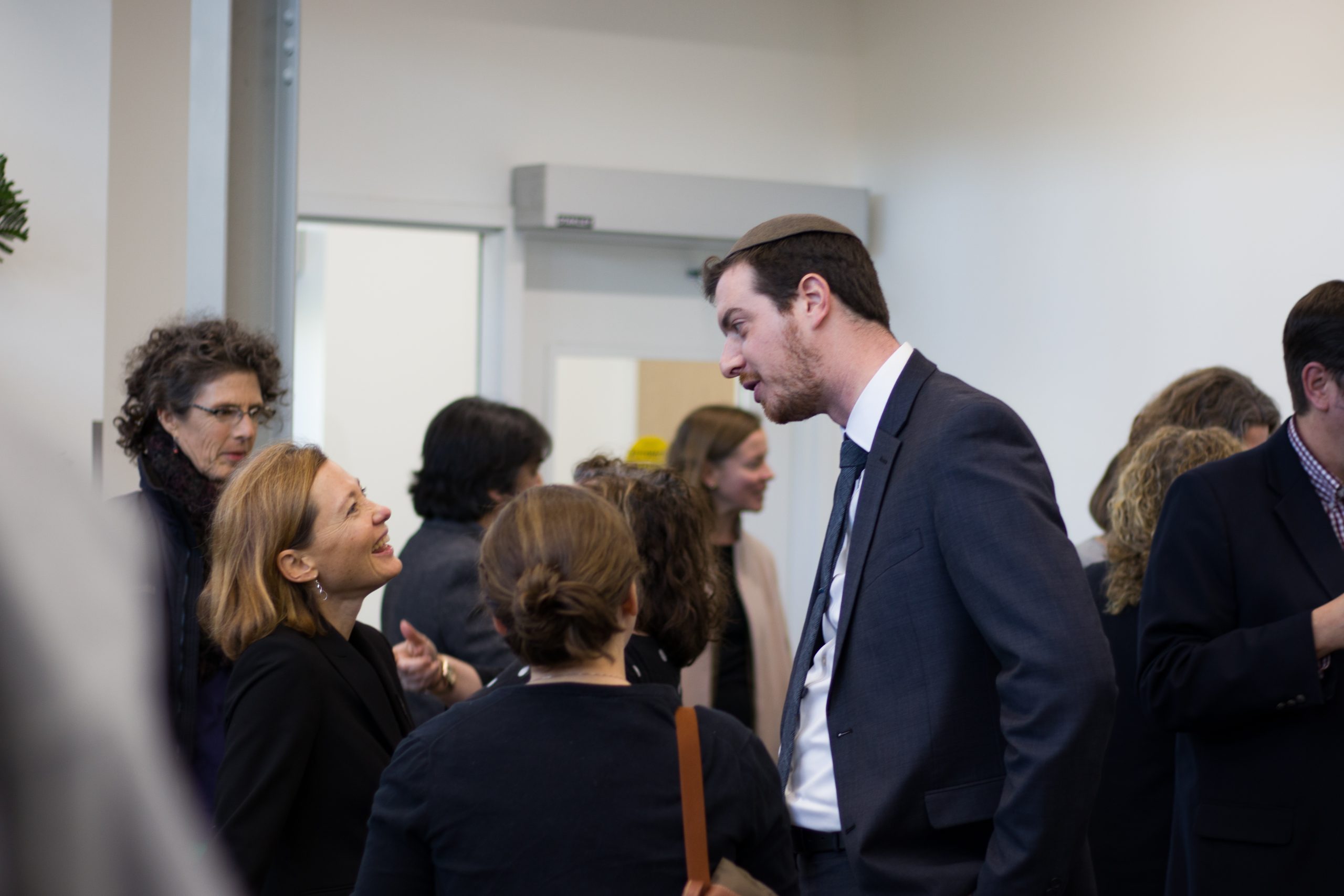On Monday, October 29, Gustavus Adolphus welcomed Dr. Samuel Kessler as the first Bonnier chair of the Jewish Department.
The Bonnier Chair position was created when the Bonnier family “gave the college money specifically to fund a new position in the religion department,” Professor Mary Gaebler said.
With Dr. Kessler’s inauguration to the position, the religion department now has scholars from Jewish, Islamic, and Buddhist studies, working and teaching alongside professors with a focus in religious studies from Christian perspectives.
This is a blend which Professor Gaebler calls “a critically important expansion of the religion department in light of the growing cultural and religious diversity here and abroad.”
Around a dozen people attended the inauguration, which was held in the Interfaith Center to honor the Bonnier family, who in addition to donating money to fund the Bonnier Chair position also donated money for the creation of the Interfaith Center.
When asked why he chose to come to Gustavus, Dr. Kessler said, “Gustavus is a remarkable institution. It epitomizes the best of the liberal arts college heritage: a focus on teaching, a commitment to students and campus life, a scholarly and knowledgeable faculty who are also quite funny, easy to be friends with, and honestly in love with their jobs… I feel privileged and honored to be in the religion department.”
Dr. Kessler added, “My colleagues are what we’d call in Yiddish “real mensches,” which means truly kind and genuine people, whose commitment to their students and to learning is deep and broad… They astound me every day.”
Though he was born and raised back East, Dr. Kessler chose to come to Gustavus “because this was an amazing opportunity: to get to work at a liberal arts college where the study and practice of religion were cherished parts of the college’s history and integral parts of it future.”
He added, “I felt a connection with Gustavus’ five core values, as they were ones that have motivated my choices in life as well.”
Overall, he believes coming to teach at Gustavus “has been the best career move I’ve ever made.”
Dr. Kessler is currently working on a book, titled City and Sanctuary: Adolf Jellinek and the Origins of the Modern Rabbi.
It focuses on Jewish modernity, specifically, “when, why, and how did Jews come to live in cities,… build large synagogues,… and employ full-time rabbis to give weekly sermons? The answer to these questions, I argue… can be found in the history of Central European Jewry in the 1850s and 1860s,” Dr. Kessler stated.
“Judaism has long been taught here… in varied ways… opportunities for our students to understand Judaism more deeply in terms of its own religious categories, experiences, and values–and not as simply as a background or corollary to other concerns have been lacking. This remains a pressing need, not only on campus, but throughout much of the world today,” Elledge said.
He continued to say that the creation of a chair position in Jewish studies through the generosity of Reverend Åke and Kristina Bonnier brought “exceptional value” to Gustavus and would bring deeper religious education and understanding.
Kessler then responded, taking a moment to speak about the “two sad events between which this joyous afternoon is bookended.”
The Tree of Life Synagogue shooting on Saturday, October 27 left 11 dead and six injured, four of whom were police officers responding to the attack.
Also, November 9 marks the 80th anniversary of Kristallnacht, or the “Night of Broken Glass,” when Jewish people and their businesses, holy books, manuscripts, and synagogues were attacked, imprisoned, looted, and burned. Kristallnacht “is generally understood by historians as the most significant prelude to the attempted destruction of the entire Jewish people in the Second World War,” Kessler said.
Kessler included, as “a tragic footnote of our age,” mention of numerous events of violence in and outside churches, mosques, synagogues and temples, going back to 2012.
He then shared several anecdotes from the Torah centered around learning and what it means to be both a teacher and a student.
“There are four midot, essential characters, of students: One who learns quickly and forgets quickly–his gain is cancelled by his loss. One who learns slowly and forgets slowly–his loss is cancelled by his gain. One who learns quickly and forgets slowly–he is a happy lot. One who learns slowly and forgets quickly–he is a sad lot,” Kessler said.
“Each student has a little of… each essential character. If we teach too quickly… the loss will be outstripped by the gain. If we teach too slowly… the loss will be outstripped by the gain. The good portion is when we teach at the right pace…, so that a full vessel stays perpetually full,” Kessler said.
“Shalom u’veracha. May we find wisdom and good health together,” Kessler said.
Reverend Åke Bonnier was then welcomed to speak, and he spoke about his appreciation for Judaism, its history and culture, and his hope for a peaceful future.
This inauguration and reception could not have been possible without the generosity of Rev.
Åke Bonnier and the Bonnier family or the efforts of Professor Gaebler, Professor Elledge, and all other involved faculty and staff. To Dr. Kessler: welcome and congratulations.
